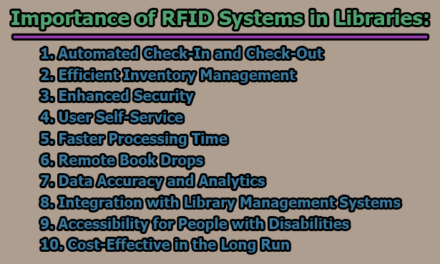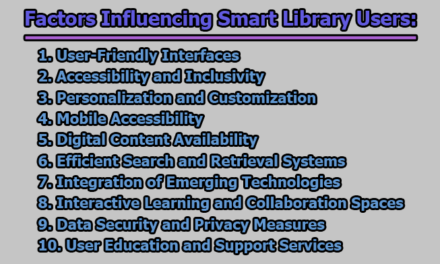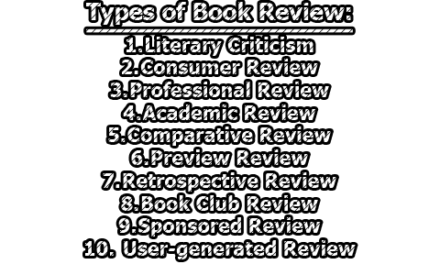Types of Documentary Information Sources:
Documentaries serve as important tools for conveying information, raising awareness, and capturing real-life events. They draw upon a range of sources to gather and present factual information to the audience. These sources can be classified into three main categories: primary sources, secondary sources, and tertiary sources. Each category plays a distinct role in documentary filmmaking, providing different perspectives, levels of analysis, and depth of information. In this article, we will explore the types of documentary information sources.
1. Primary Sources:
Primary sources are the raw, unfiltered materials directly related to the subject matter of a documentary. They offer firsthand accounts, original data, and direct evidence of events, people, or phenomena. These sources are often created by individuals who have experienced or witnessed the events being documented. Primary sources in documentaries can include:
a. Interviews and Oral Histories: Interviews with key individuals, experts, witnesses, or participants provide valuable insights, personal experiences, and expert opinions. Filmmakers may conduct interviews specifically for the documentary or incorporate archival interviews from previous recordings.
b. Archival Footage: Archival footage refers to preexisting audiovisual material that captures past events, historical moments, or cultural phenomena. It can include newsreels, home videos, government records, and other recorded materials that are relevant to the documentary’s subject.
c. Diaries, Journals, and Letters: Personal documents, such as diaries, journals, and letters, offer intimate perspectives on events, providing glimpses into the thoughts, emotions, and experiences of individuals involved. These primary sources can be powerful tools for humanizing the documentary’s subject matter.
d. Photographs and Visual Records: Photographs and visual records serve as visual evidence of the documentary’s subject. They provide a glimpse into the past, allowing viewers to see the people, places, and objects that are being discussed. Photographs can add depth, authenticity, and emotional impact to the documentary.
Primary sources offer immediacy and authenticity, allowing viewers to engage directly with the original materials. They often create a sense of connection and credibility, as the audience experiences the events through the eyes of those involved. However, primary sources can be limited by biases, limited perspectives, and incomplete information. It is essential for documentary filmmakers to critically analyze and corroborate primary sources to ensure accuracy.
2. Secondary Sources:
Secondary sources in documentaries are derived from primary sources but offer additional analysis, interpretation, and commentary. These sources provide context, expert opinions, and broader perspectives on the subject matter. Common examples of secondary sources include:
a. Books, Articles, and Academic Papers: Scholarly works, books, articles, and academic papers provide in-depth analysis, research findings, and critical perspectives on the subject matter. Filmmakers often rely on these secondary sources to gain a comprehensive understanding of the topic and to support their arguments.
b. Documentaries and Films: Existing documentaries and films on related subjects can serve as secondary sources. Filmmakers reference and analyze these works to build upon previous knowledge, explore counterarguments, or offer contrasting viewpoints.
c. News Reports and Journalism: Journalistic reports, news articles, and investigative journalism pieces can provide a contemporary context and additional insights into the subject matter. These secondary sources often present current events, expert opinions, and new developments related to the documentary’s topic.
d. Commentaries and Expert Interviews: Commentaries by experts, scholars, or commentators in the field contribute valuable insights and interpretations. Filmmakers often include expert interviews to enhance the documentary’s credibility and provide expert analysis of the subject.
Secondary sources offer analysis, context, and a broader understanding of the subject matter. They help filmmakers present multiple perspectives, evaluate contrasting viewpoints, and create a comprehensive narrative. However, secondary sources can also be influenced by biases, differing interpretations, and subjective analysis. Documentary filmmakers need to critically assess the reliability and credibility of these sources.
3. Tertiary Sources:
Tertiary sources provide a distilled and synthesized overview of primary and secondary sources. They aim to summarize, organize, and present information from a wide range of sources. Tertiary sources include:
a. Encyclopedias and Reference Books: Encyclopedias and reference books compile information from various primary and secondary sources into a single, comprehensive volume. They offer concise summaries, definitions, and factual details about the subject matter.
b. Databases and Digital Libraries: Digital databases and online libraries collect a vast amount of information from primary and secondary sources. They provide easy access to a wide range of materials, such as research papers, reports, statistical data, and historical documents.
c. Documentaries and Film Catalogs: Catalogs or databases of existing documentaries and films allow filmmakers to discover related works, explore different approaches, and identify gaps in the existing documentary landscape. They serve as a resource for research and inspiration.
d. Bibliographies and Literature Reviews: Bibliographies and literature reviews compile lists of relevant primary and secondary sources, guiding researchers and filmmakers towards further exploration. They provide references and citations, facilitating access to the original materials.
Tertiary sources act as gateways to information, providing overviews, summaries, and access points to more detailed sources. While they are useful for gaining a general understanding of the subject matter, tertiary sources may lack depth and nuanced analysis. Filmmakers should use them as starting points for further research and verification.
In conclusion, documentaries draw upon a range of information sources to provide accurate, insightful, and compelling narratives. Primary sources offer firsthand accounts, original data, and direct evidence, while secondary sources provide analysis, interpretation, and contextualization. Tertiary sources act as summarizing tools, distilling information from primary and secondary sources into accessible formats. Each type of source contributes to the documentary-making process, bringing unique perspectives, depth, and credibility. Documentary filmmakers must critically evaluate and corroborate these sources to ensure accuracy and integrity in their storytelling.
FAQs:
What are primary sources in documentary filmmaking?
Primary sources in documentary filmmaking are raw, unfiltered materials that directly relate to the subject matter. These sources offer firsthand accounts, original data, and direct evidence of events, people, or phenomena. Examples of primary sources include interviews, oral histories, archival footage, diaries, journals, letters, and photographs.
How do primary sources contribute to the authenticity of a documentary?
Primary sources contribute to the authenticity of a documentary by providing direct and immediate access to the original materials related to the subject matter. They offer firsthand perspectives and experiences, creating a sense of connection and credibility for the audience. Primary sources, such as interviews and archival footage, allow viewers to engage directly with the events and people being documented.
What are the advantages and limitations of primary sources in documentaries?
The advantages of primary sources include their immediacy, authenticity, and ability to provide firsthand accounts and original evidence. They can create a powerful emotional impact and offer a personal connection to the subject matter. However, primary sources can be limited by biases, limited perspectives, and potential incomplete information. Filmmakers must critically analyze and corroborate primary sources to ensure accuracy and avoid relying solely on one source.
What are secondary sources in documentary filmmaking?
Secondary sources in documentary filmmaking are derived from primary sources and offer additional analysis, interpretation, and commentary. These sources provide context, expert opinions, and broader perspectives on the subject matter. Examples of secondary sources include books, articles, academic papers, documentaries, films, news reports, journalism, and expert interviews.
How do secondary sources contribute to the depth of information in a documentary?
Secondary sources contribute to the depth of information in a documentary by providing analysis, interpretation, and a broader understanding of the subject matter. They help filmmakers present multiple perspectives, evaluate contrasting viewpoints, and create a comprehensive narrative. Secondary sources, such as scholarly works, documentaries, and expert interviews, offer insights and expertise that enrich the documentary’s content.
What are the advantages and limitations of secondary sources in documentaries?
The advantages of secondary sources include their ability to provide in-depth analysis, research findings, expert opinions, and a broader context. They offer a wealth of knowledge and different viewpoints on the subject matter. However, secondary sources can also be influenced by biases, differing interpretations, and subjective analysis. Filmmakers need to critically assess the reliability and credibility of these sources to ensure accuracy and objectivity.
What are tertiary sources in documentary filmmaking?
Tertiary sources in documentary filmmaking provide a distilled and synthesized overview of primary and secondary sources. They aim to summarize, organize, and present information from a wide range of sources. Examples of tertiary sources include encyclopedias, reference books, databases, digital libraries, catalogs of documentaries and films, and bibliographies.
How do tertiary sources aid in the research process for documentary filmmakers?
Tertiary sources aid documentary filmmakers in the research process by providing concise summaries, definitions, and factual details about the subject matter. They act as gateways to information, offering overviews and access points to more detailed primary and secondary sources. Tertiary sources, such as databases and literature reviews, help filmmakers discover relevant materials, explore different approaches, and identify gaps in the existing documentary landscape.
What are the advantages and limitations of tertiary sources in documentaries?
The advantages of tertiary sources include their ability to provide quick access to a wide range of information, summaries of complex topics, and references to primary and secondary sources. They serve as valuable starting points for research and provide a general understanding of the subject matter. However, tertiary sources may lack depth, nuanced analysis, and can sometimes oversimplify complex issues. Filmmakers should use them as a foundation for further research and verification.
How should documentary filmmakers approach the use of different types of information sources?
Documentary filmmakers should adopt a critical and balanced approach when using different types of information sources. They should strive for a combination of primary, secondary, and tertiary sources to ensure accuracy, credibility, and a comprehensive understanding of the subject matter. Filmmakers should critically analyze and corroborate their sources, cross-referencing different perspectives and verifying facts to present a well-rounded and informed narrative.
References:
- Barsam, R., & Monahan, D. (2017). Looking at Movies: An Introduction to Film (5th ed.). W.W. Norton & Company.
- Borden, D. L. (2013). The documentary filmmaker’s handbook: A guerilla guide. Cengage Learning.
- Corner, J., & Rosenthal, A. (Eds.). (2009). Documentary and the Study of Memory: A film, an internet archive, and a digital memory project. Palgrave Macmillan.
- Nichols, B. (2017). Introduction to Documentary (3rd ed.). Indiana University Press.
- Renov, M. (Ed.). (1993). Theorizing documentary. Routledge.
- Rotha, P., & Hardy, F. (2016). Documentary Film: The use of the film medium to interpret creatively and in social terms the life of the people as it exists in reality. Routledge.
- Sobchack, V. (2016). Documentary: A History of the Non-Fiction Film (2nd ed.). Oxford University Press.
- Winston, B. (2008). Claiming the Real: The Griersonian Documentary and Its Legitimations. British Film Institute.

Former Student at Rajshahi University










